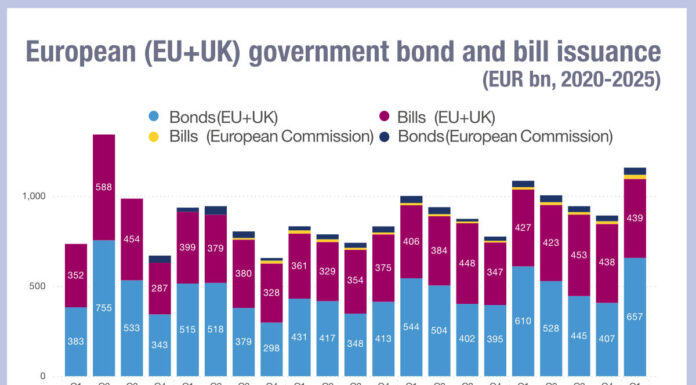Fund manager BlueCrest has been fined just over £40 million by the UK’s Financial Conduct Authority (FCA) for inadequate disclosures to investors, regarding its management of funds between 2011 and 2015.
The fine follows a similar action by US regulator the Securities and Exchange Commission (SEC) in November 2020, which led to a US$170 million fine, and a notice of distribution to harmed investors in November 2021.
UK-based investment adviser BlueCrest Capital Management Limited agreed to pay the US$170 million fine to settle charges arising from “inadequate disclosures, material misstatements, and misleading omissions concerning its transfer of top traders from its flagship client fund, BlueCrest Capital International (BCI), to a proprietary fund, BSMA Limited, and replacement of those traders with an underperforming algorithm,” according to the SEC.
The FCA noted that BlueCrest managed both external funds open to investors outside BlueCrest, and internal funds open only to its partners and employees, but failed to adequately manage conflicts of interest and client disclosure, as it moved portfolio managers between those funds, and allocated capital to a semi-systematic trading strategy.
BlueCrest’s “flagship” external client fund, which in the relevant period between October 2011 and December 2015, was BlueCrest’s largest fund by AuM, with a high of US$14.5 billion. That had decreased to US$2.2 billion when it closed to external investment in December 2015.
The majority of the fund’s capital was allocated to Capital Units based on BlueCrest’s “Rates” and “Relative Value” desks.
On 1 October 2011, BlueCrest launched an Internal Fund which was not open to investment from BlueCrest’s external clients. BCMUK was appointed as a Sub- Investment Manager of the Internal Fund in the previous month.
Similarly to the flagship fund, the Internal Fund could invest in a wide range of financial instruments. Moreover, the majority of the Internal Fund’s capital was allocated to the Capital Units based on BlueCrest’s Rates desk, and with “significant capital also allocated to the Relative Value based portfolio managers.”
The Internal Fund’s stated purpose was to “attract and retain senior partners and other key members of staff”.
According to the FCA report, from the launch of the Internal Fund on 1 October 2011 a conflict of interest was present from this date because it was at this point that portfolio managers from the flagship fund could have been reallocated to the Internal Fund.
At the start of this period the Internal Fund’s AuM totalled US$0.5 billion, with 14 BlueCrest individuals exposed to it. By the end of the relevant period, its AuM had risen to over US$2 billion with 55 individuals exposed to it, including portfolio managers who traded for the funds. The vast majority of exposure to the Internal Fund was concentrated around a relatively small number of individuals.
Eligibility to be exposed to the returns of the Internal Fund and the level of that exposure was ultimately determined by members of BlueCrest’s senior management, the FCA noted.
It also observed that used an over allocation ratio (OAR) to measure the aggregate amount of allocated notional capital to the total AuM of certain of its funds, with an over allocation of the external fund remained largely consistent at 1.5 times capital to AuM, while the Internal Fund had an OAR that was on average, above 10. From January 2015, the total amount of capital allocated to the Internal Fund exceeded that of the External Fund.
In April 2012, a BCMUK ExCo member wrote that the “majority” of Rates-based portfolio managers were trading for the Internal Fund rather than the flagship fund. They queried whether the “level of transfer” of portfolio managers from the flagship fund to the Internal Fund was such that it should be disclosed to investors and regulators. But following this email there was no additional disclosure regarding the number of PMs transferred, or how any related conflicts were managed by BCMUK.
During the period in question BlueCrest began allocating capital to a semi-systematic capital unit called ‘RMT’, devised a few months prior to the launch of the Internal Fund and itself launched in January 2012. It operated through a combination of algorithmic processes and human review.
RMT sought to replicate portfolio manager trading activity by reference to a “target portfolio” which comprised two main components: 1) Portfolio Manager “weights”; and 2) asset classes and strategies which RMT could replicate. BlueCrest aimed, through such replication, to align RMT’s realised P&L as closely as possible with the expected P&L of its target portfolio. It measured performance of RMT according to how closely its realised P&L and the target P&L were aligned.
The complexity and costs associated with certain trading activity meant that RMT did not attempt to replicate every rates and RV portfolio manager, and strategies connected with options, intraday, inflation and equity trading were often excluded from RMT’s replication processes.
RMT’s ability to generate positive P&L was also affected by additional costs resulting from it operating on a T+1 basis, where trades were executed at least one day after the relevant portfolio manager’s trading activity.
At times, RMT experienced “significant slippage” between the P&L it was able to realise compared with its target P&L. The FCA also found that “In addition to this P&L slippage, deficiencies in the data input into RMT sometimes resulted in actual financial loss to the [flagship fund] during the relevant period.”
Having generated a positive return in 2012, RMT generated significant losses for the Funds during 2013. In particular, in June 2013, RMT lost approximately US$305.5 million. This proved to be the worst trading month experienced by the Internal Fund during the relevant period. At this same time, the Internal Fund had also failed a cash stress test. During the following month, due to these factors, the Internal Fund substantially reduced its capital allocation to RMT by almost US$3 billion. From August 2013, the Internal Fund ceased all trading through RMT.
Conversely, the flagship fund continued to allocate significant capital to RMT. By October 2013, almost 30% of its total capital had been allocated to RMT and this steadily increased during the remainder of the relevant period. For the majority of that time, RMT was the single largest Capital Unit within the flagship fund, and had a “significant” role in ensuring the fund maintained its intended OAR. This was in spite of an increase in the disparity between RMT’s targeted performance and actual performance.
Investors in the flagship fund were not proactively made aware of the existence of RMT, or that it was a semi-systematic capital unit, and of the significant amounts of capital allocated to it. Moreover, disclosures about the number of portfolio nanagers allocated capital by the External Fund were “insufficient and misleading” because BCMUK included in that number traders that were tracked by RMT despite them having been reallocated to the
Internal Fund and no longer having individual capital allocations from the flagship fund.
According to the FCA report, limited information about RMT, which BCMUK intended to disclose reactively, was insufficient and misleading, and did not provide flagship fund investors with any information on the existence of the conflict relating to the allocation of PMs, nor how it was being managed.
“Members of BCMUK’s senior management plainly recognised that there was an inherent and overarching conflict of interest, but its response was inadequate,” the regulator concluded.
©Markets Media Europe 2025


























